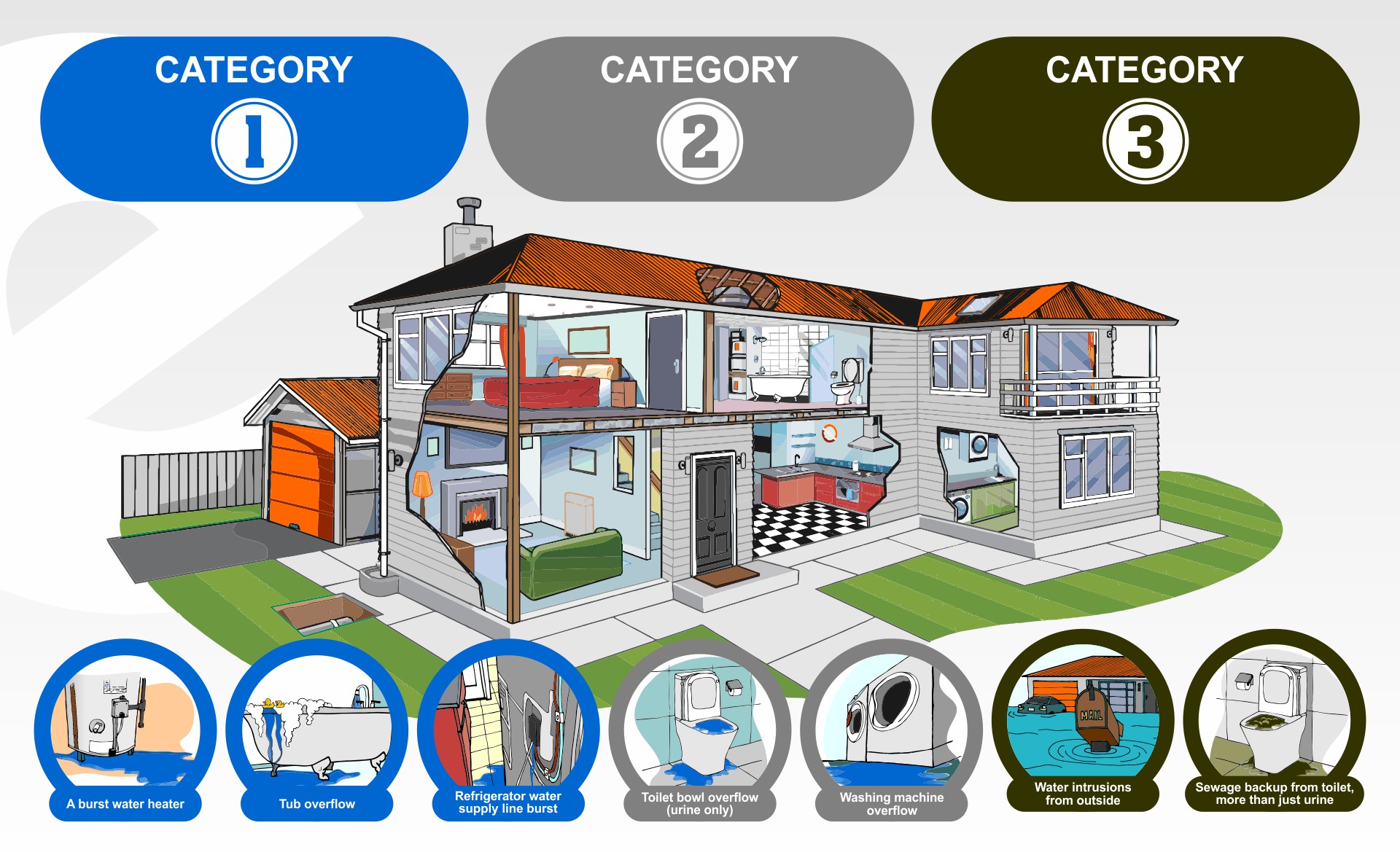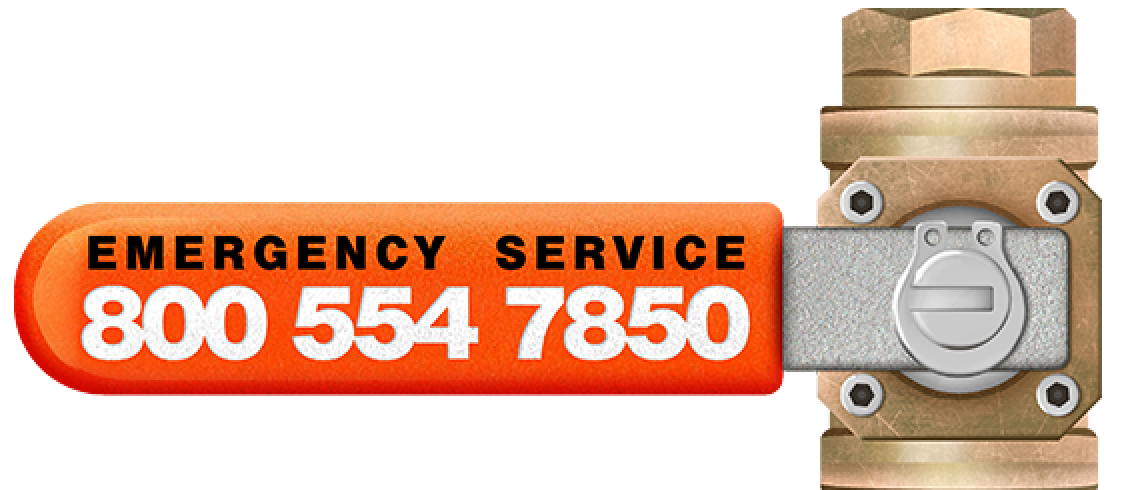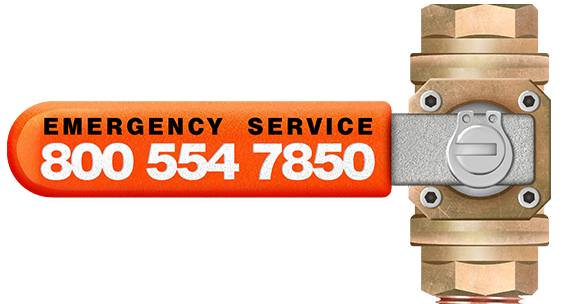Water Damage Series – Part 2: Categories
Water Categories – By the Numbers
Whenever you have a water loss and call in water mitigation professionals the first thing that must be determined before starting any work is how severe the damage is. Not all water losses are equal. As such, the technicians will use a system for categorizing the water loss based on the severity of the water contamination. This will inform them about what sort of Personal Protective Equipment (PPE) is needed for working on the job, and what sort of cleaning methods will be required.
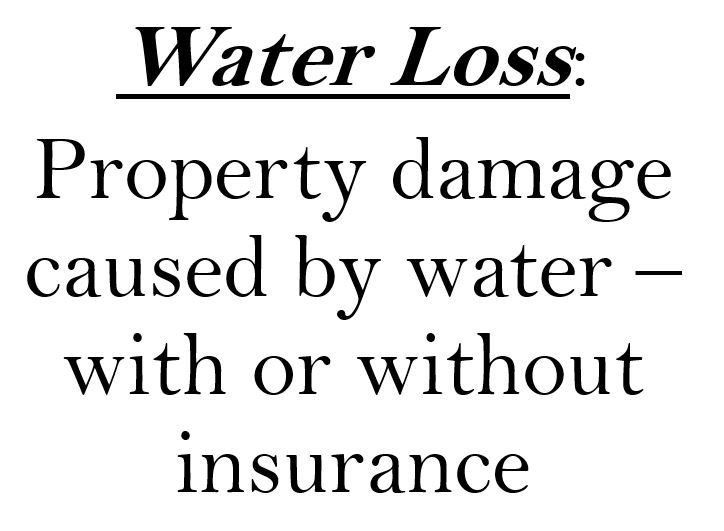
The industry standard for water loss mitigation is specified in a document called the ANSI/IICRC S500 Standard and Reference Guide for Professional Water Damage Restoration. It is created and published by the IICRC (Institute of Inspection Cleaning and Restoration Certification).
This post will address the categories of water loss as defined in that official document. It is what certified technicians will use to evaluate the loss and is fully recognized by the insurance industry as the standards required to mitigate for a water loss.
Category 1 – What It Is
Category 1 water is clean water. This means that the source of the water intrusion is safe and not contaminated. The way some people describe this is “water you would drink”. Examples of category 1 water:
- Water pipe burst under a clean sink
- Tub or sink overflow
- Washing machine or refrigerator water supply line burst or leak
- The tank on the back of the toilet
- A burst water heater
Most people would recoil at drinking out of the tank of the toilet, but there is no contamination in that part of it, so water coming from there would be Category 1.
In short, this is water that poses no risk to anyone. Nobody is going to get sick or get a rash because they had contact with this water.
If there is an odor to the water, then it is not a category 1. Any odor is an indication of contamination of some kind or other.
Time is also a factor. If it hasn’t been much time it can be a category 1. But if you come home to discover that the water heater busted and flooded your home and you’ve been away for a week, this is enough time for contaminants to be present.
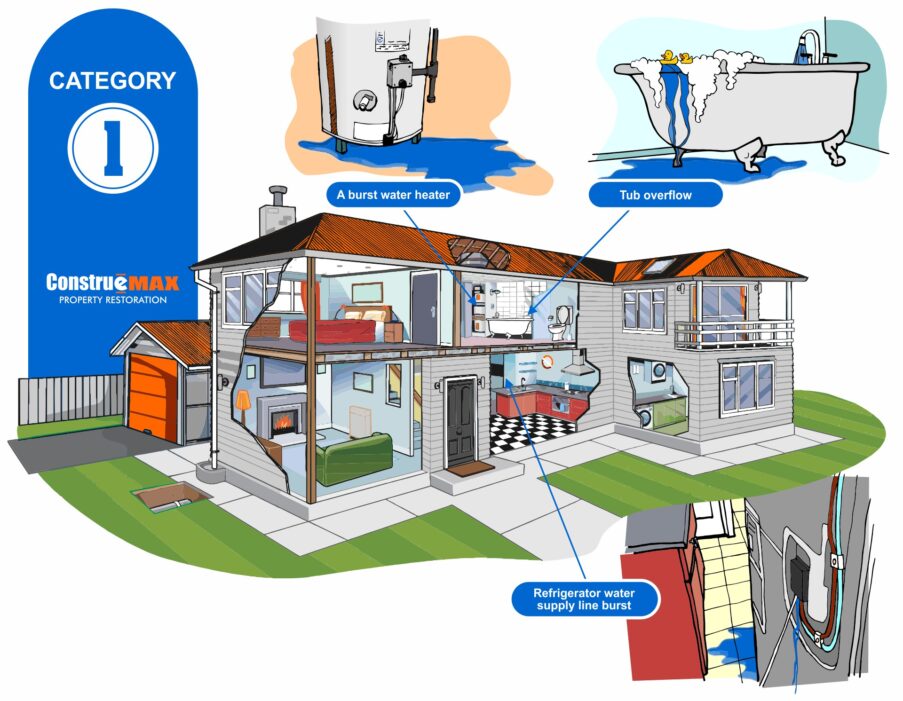
Category 2 – What It Is
Category 2 water is not clean water. Water that has contaminants in it. These contaminants could be chemical, biological, or physical.
Chemical could include cleaning solutions, carpet treatments, personal care products, grease or oil, etc.
Biological would include food particles, blood, urine, hair, etc.
Physical would include dirt, paper, lint, etc.
The water is contaminated. The contaminants are not especially toxic, but you wouldn’t want to drink water and the contamination does have the potential to make you sick or cause discomfort.
If for example your dishwasher overflowed and water was all over the kitchen and the hall carpet, and even reached into the living room carpet. When you ring out that carpet, you’re not going to want to drink that water, but it’s not likely to make anyone sick – if it is addressed right away.
On the other hand, a toilet overflow with urine, that can cause discomfort very quickly and certainly will make things immediately unsanitary.
Examples of category 2 water include:
- Toilet bowl overflow with urine
- Dishwasher overflow
- Washing Machine tub overflow or leak
- Washing machine drainpipe leak
- Water in carpets, especially the carpet pad
- Water in a ceiling or wall
When cleaning up a category 2 loss the technicians will use Personal Protective Equipment (PPE) appropriate for the job. What is used for a category 3 will be more.

Category 3 – What It Is
Category 3 is toxic or potentially toxic water. Any sewer backup is a category 3 loss. Any time water intrudes from outside, that will fall under this category. When we say category 3 is toxic, it means there is a serious risk of disease from exposure. When we say potentially toxic it is because we can’t know in some circumstances if there are toxins in the water or not. But we can’t rule it out, so it must be treated as toxic.
For example, water entering the home through cracks in the foundation have the potential to bring with it toxic chemicals or bacteria from outside. Of course, viruses and bacteria are not visible to the naked eye, so it’s possible they are present and pose a risk and you have no idea.
Water coming from outside might not seem to be as risky as a sewer backup. A sewage problem is known to have pathogenic or disease causing agents. We are also concerned with the unknown levels of contamination. Sewage is known to carry pathogens like E coli, Salmonella, and Hepatitis A. Flood waters can carry the same diseases as well as pesticides, fertilizers, and other contaminants in the environment.
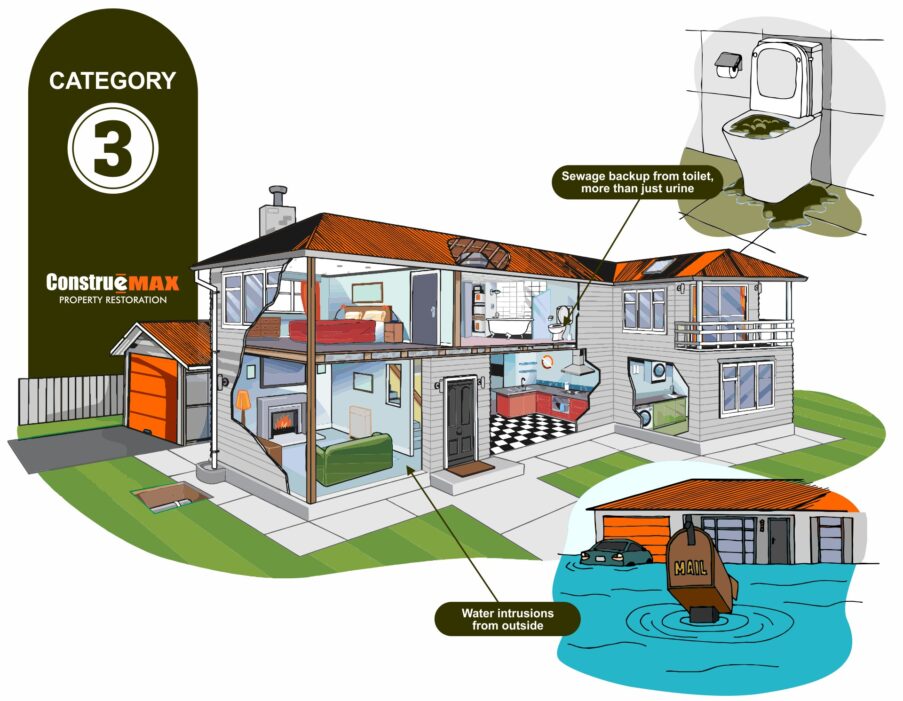
Category 3 Safety Measures
When you have a category 3 situation there are precautions that must be taken. We take these precautions for both your safety and the safety of our workers. These safety measures include:
- OSHA guidelines are followed, and affected areas are marked as potentially hazardous as a warning to anyone who might enter the area.
- Anyone with health concerns is removed from the area until the area has been deemed safe for occupancy. This would include those with compromised immune systems because of already being sick or having recently undergone cancer treatments or surgery. The very young and the elderly are of particular concern.
- Personal Protective Equipment (PPE) like gloves, masks, boots, body coverings, eye protection, and so forth. Not only are these used, but they are donned (put on) and doffed (taken off) in a proscribed manner and disposed of properly using hazardous waste procedures.
- Decontamination processes are followed using the appropriate biocides and cleaners. This decontamination process includes permanently removing highly porous materials that trap the toxic contaminants. Material such as carpet and padding, drywall, and insulation. Depending on the nature of the disaster there may be unsalvageable personal property as well that must be disposed of such as furniture, clothing, and toys.
Clean, Clean, Clean
Unlike categories 1 and 2, with category 3, everything must be cleaned, contaminated materials removed and disposed of, cleaned again, and cleaned one more time.
When you have a category 3 loss the concern is toxicity. A small concentration of a virus poses a threat, but left alone it will grow and multiply exponentially to create a much, much worse threat. It will also make the process longer to complete the decontamination. So throughout the cleaning process, the technicians will be using biocide agents to help control the microorganisms. And when the affected materials are completely removed, the areas are cleaned again.
As you can see, the amount of labor, time, and materials will grow dramatically with each category from 1 to 3. As such, to contain costs of restoration and to salvage the greatest amount of property, it is important to address the water problems early. You don’t want a category 1 to become a category 3.
Moving From One Category to Another
Yes, these losses can move from one category to the next. But it’s a one way street. You might have a category 1 loss from a refrigerator supply line break, but if it isn’t cleaned up quickly enough it can become a category 2. Likewise, with a category 2, if not cleaned up quickly enough, it can become a category 3.
How would that happen? The category assignment of a loss is tied specifically to the level of contamination.
Suppose you have a bathtub on the second floor that overflows. It’s clean water and you can clean that up. Even if it gets your carpet wet in the hallway or bedroom, if you get to it fast enough, you can save the carpet and dry everything out. Great.
But what if the water starts soaking into the walls, and then starts wetting the ceiling below? Well now you have a category 2 loss.
Now take a look at how a category 2 migrates to a category 3.
Remember, a category 2 means there is some contamination already and has the potential to cause sickness or discomfort. It could have an odor, or it may not. But water that is left for 24-48 hours before being addressed will have given the microorganisms time to grow to the point of being toxic and make it a serious risk for getting sick or causing discomfort.
How the Cost of Mitigation is Affected By Each
Obviously, the cost of cleaning up a water disaster and drying out the space will be greatly affected by the category of loss. Having to call in a specialist to extract water and professionally dry the property means you had a lot of water. That is headache enough. But when the flooding is contaminated and a category 2, more needs to be done than just extracting the water and drying the area. It requires cleaning at the very least.
In most circumstances, when you have a category 2 loss, there will be some materials that are lost too. It could be carpet and padding or wood floors. Or it could be that you have drywall that needs to be removed. That will cost more than just drying out the area.
A category 3 loss requires so much more that the cost grows exponentially even higher, you should be able to get a sense of why below reviewing some of the effects on health and property.
Health of People – Workers, Residents, Employees, Customers
Whenever any disaster happens the first concern is that everyone is okay. It doesn’t matter if it’s a hurricane, fire, car accident, or a water disaster in your home. When it’s a water disaster in your home it doesn’t sound especially dangerous to your health – until you consider all the possible ramifications.
Water disasters with sewage is a no brainer health hazard, but even clean water can start to cause health problems. If not cleaned up quickly, mold will start to grow. Mold spores are everywhere. That’s just a fact of living on this planet. To grow into colonies of mold they usually just need some water. When you have a water disaster in your house, that’s what you’ve given it. And mold will grow.
Whether it’s mold, viruses, bacteria, or sewage, we take safety very seriously and every mitigation company should. This means using the appropriate Personal Protective Equipment (PPE) and cleaning any affected areas that can be cleaned, and removing any materials that have become permanently contaminated.
Health of the Property – Structural Damage, Aesthetic Damage
When we talk about the health of the property we are talking about its structural integrity and its aesthetic quality. Two homes next to each other built the same year and with the same building plans can have very different appearances years later depending what each has endured in terms of water damage and maintenance. Water damaged building materials will affect both the structural integrity and the appearance of the home.
If you have category 1 water that is dried up quickly you can save walls. But allowed to remain wet for a while it can become a category 2. Every bit of building material like drywall that becomes unsalvageable needs to be physically removed. That increases the cost of the mitigation, and all that material must be removed before the drying process can begin. If mold has begun to grow, it needs to be removed before the drying process.
A category 2 will be more labor intensive than a category 1 and a category 3, more so than a category 2. You should expect to see the amount of contaminated building material that needs to be removed and disposed of to increase dramatically from one category to the next. All of that increases costs.
Special Circumstances That Don’t Change the Category, But Require Special Care
The next installment in this water damage series will address special circumstances with respect to building materials that need to be accounted for when doing water loss mitigation. These special circumstances don’t change the category of water loss, but they affect how mitigation must be performed.





